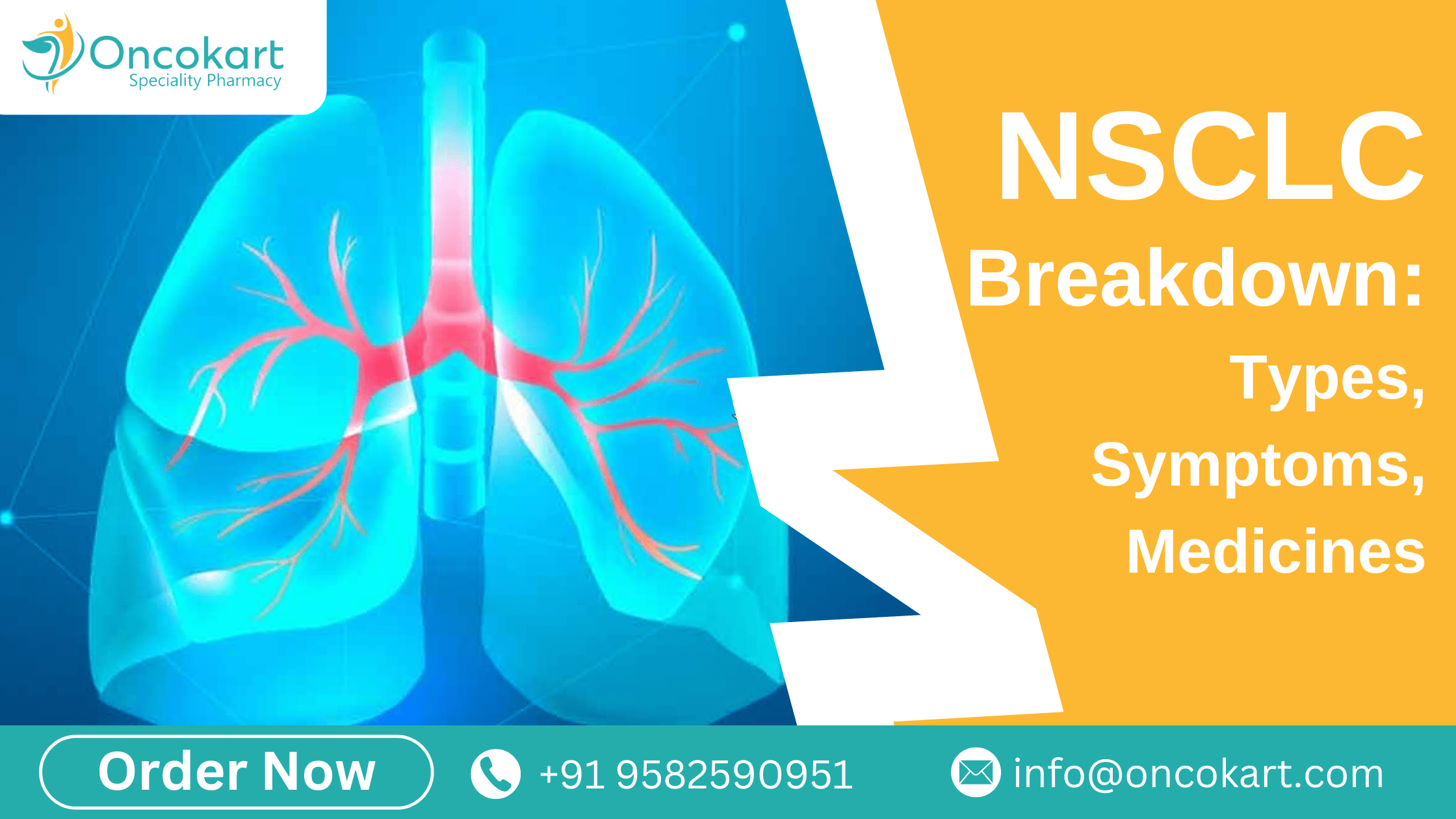No products in the cart.

Lung cancer remains a formidable challenge globally, with Non-Small Cell Lung Cancer accounting for about 85% of all cases. This type contrasts sharply with its faster-growing counterpart, Small Cell Lung Cancer (SCLC), as NSCLC typically progresses more slowly. Understanding this distinction is crucial as it affects treatment decisions and patient outcomes.
How Many Types of NSCLC Are There and How Do They Differ?
NSCLC divides into three primary types: adenocarcinoma, squamous cell carcinoma, and large cell carcinoma. Adenocarcinoma typically begins in the outer parts of the lungs and is most common among non-smokers. So, squamous cell carcinoma usually appears in the central parts of the lungs near a bronchus. But large cell carcinoma, which can develop in any part of the lung, grows and spreads quickly, making it particularly challenging to treat. Each type varies significantly in terms of origin and spread, reflecting the complex nature of lung cancer stages.
What Are the Symptoms of NSCLC and When Should You See a Doctor?
Lung cancer symptoms often present subtly and can easily be mistaken for less serious conditions. Because of this, it’s vital to recognize signs like a persistent cough, coughing up blood, chest pain, shortness of breath, and unexplained weight loss. So, if you notice any of these lung cancer symptoms persisting, it is crucial to see a healthcare provider without delay.
What Advanced Therapies Are Available for NSCLC?
Recent advancements in NSCLC treatment have transformed patient care. Targeted therapies now focus on specific genetic markers in cancer cells, making treatments more effective and less harmful to normal cells. Immunotherapies enhance the body’s immune response against cancer cells, offering hope to patients who previously had limited options. These treatments are particularly pivotal in managing small cell carcinoma treatments and improving survival rates and quality of life. Moreover, modern surgical techniques have become less invasive, providing patients with quicker recovery times and fewer complications.
How Common is NSCLC in India and Who is Most at Risk?
In India, NSCLC is the leading cause of cancer-related deaths among men and ranks second among women. The disease’s prevalence highlights the need for awareness and early detection strategies. Risk factors include prolonged exposure to cigarette smoke, air pollution, and occupational hazards like asbestos. Rapid urbanization and increased industrial activity have exacerbated the risk, reflecting an urgent need for public health interventions and education about lung cancer stages.
How Does Oncokart Support NSCLC Patients with Advanced Medications?
Oncokart is dedicated to making life-saving medications both accessible and affordable, helping patients manage their treatment effectively. We provide a wide range of medications for NSCLC, including the latest in small-cell carcinoma treatments. By offering these advanced options, we aim to empower patients and enhance their treatment success. Buy medicines online in India easily through our platform for online medicine delivery.
Opting for Oncokart means accessing high-quality, effective treatment options at competitive prices. We commit to supporting our customers with comprehensive care and detailed treatment information. For more details or to consult with healthcare providers, please visit our website or contact us directly. Buy medicines online in India through Oncokart for reliable online medicine delivery. Let Oncokart be your partner in navigating your lung cancer treatment.



